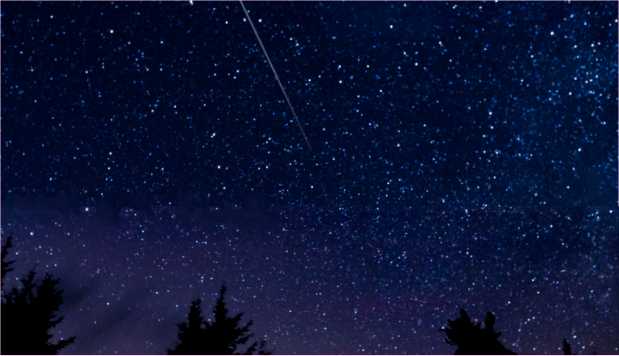|
The Feel-Good Guide to Sports, Travel, Shopping & Entertainment
|
||
| Main | Sports Events | Holidays & Observances | Pop Culture | Shopping | Travel |
|
MAIN
The Perseid meteor shower is an annual meteor shower that is extremely regular in its timing and can potentially be visible for weeks in the late summer sky, depending on weather and location. The Perseid meteor shower is named after the constellation Perseus, which is located in roughly the same point of the night sky where the Perseid meteor shower appears to originate from. This is a useful
naming convention, but not very accurate! Although random sightings of shooting stars from the Perseids can occur as early late July, peak viewing is usually around mid-August.
The Perseids at their peak will occur at the same time as the half (first quarter) moon that will set at midnight, providing a dark sky for perfect conditions in which to view the Perseids in 2024.
Because of the way the earth hits this debris cloud, the Perseid meteor shower is much more visible in the Northern hemisphere. People in Canada, for instance, can clearly see the meteor shower by mid-July, but generally there isn't much activity at such an early date. Throughout Europe, the US and in the rest of North America, meteor shower activity usually peaks sometime around August 12th, when it is not unusual to see at least 60 meteors per hour streaking across the Northeast sky.
While mostly viewable to the naked eye, the annual Perseid meteor show may be partially obstructed by the moon, clouds or night mist, so amateur astronomers may want to carry along a pair of binoculars or a camera with a telescopic lens. Even on clear nights, some kind of viewing aid comes in handy for catching sight of even the faintest of falling stars, aptly named "telescopic" meteors. Experts usually just advise to forget the telescope, and simply look up toward the northeast sky. For photographing the annual event, a digital camera mounted on a tripod helps to steady the images that swiftly move across the sky. A quick trigger
finger also helps. Even random clicks during the height of
Perseid "prime-time" will guarantee that you'll
catch something! Be sure to have the camera focused on infinity
and, if your camera permits, leave the shutter open for several
minutes for the most spectacular photographic effects.
Meteor Showers & Viewing Tips - The full year's schedule with peak dates and best viewing times in the U.S. Perseid meteor showers - Everything you need to know, including updated information on this year's spectacular. About Meteors - Brief but informative overview of common terms that help identify various sizes and types of meteors.
also
see in Science -->
Viewing
Iceland's Northern Lights
|


